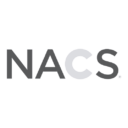
Insights
Retail Site Technology End-of-Life Timelines: What You Need to Know

Imagine it is March 2026, and every iPhone user is notified that their text messages are being spied on by a foreign government. To make matters worse, Apple cannot deploy a fix to any device except the iPhone 16 released February 2025. This leaves millions of iPhone users with several undesirable options:
- Stop sending text messages and go back to phone calls and e-mails
- Buy a new iPhone. Good luck getting one while millions jam Apple Stores and other retail outlets nationwide.
- Switch to an Android or Google phone. Same functionality, slightly different experience to get used to, and certainly not free.
Before leaving this metaphor, the final point is that Apple would have known about the possibility of this occurring all along. To prevent this “doomsday-esque” scenario, they could have preemptively told users to start planning to buy a new iPhone, and that there was a high probability that older phones would become obsolete. While not everyone would have listened, at least Apple would have been covered since they communicated to their customers and put the responsibility of how to prepare into their hands.
No, this is not an article to promote Android and Google phones. But it is a real scenario that retailers across the United States very well may face in the next 1-2 years as they find key components of their payments ecosystems facing end-of-life, end-of-sale, or PCI/certification non-compliance.
From point-of-sale devices that won’t support upcoming software upgrades, to PIN pads that are no longer compliant with updated card brand mandates, to outdoor payment terminals that have components that no longer meet certification standards, retailers could find themselves with a huge investment in hardware that cannot be upgraded or certified to fully support fuel and C-store sales functions into the future.
While this news has been circulating for the last 6-8 months, there has been little clarity about end-of-life (EOL) and end-of-sale timelines across the convenience and retail fueling industry, how to navigate these changes, and the impact on operations going forward. “The EOL announcement for certain technologies from multiple vendors has created significant uncertainty,” confirms W. Capra Senior Vice President, Zach Pastko. “The details of these timelines and the potential implications remain vague, especially for businesses relying on outdated hardware and software. New payment processors, point-of-sale solutions and other technologies continue to emerge, raising many questions about how to effectively manage a mixed hardware environment and navigate certification challenges.”
With the rapid growth and complexity of technologies like mobile payments, contactless solutions, and faster consumer experiences, POS hardware and payment devices that weren’t built for these capabilities and cannot be upgraded will fall short of meeting the demands of these new solutions. Further, the potential financial burden placed on retailers to make significant hardware changes to meet certification and security compliancy means retailers in the fuel and convenience space need to understand their options and make roadmap plans well in advance of expirations and deadlines.
Planning for Hardware Replacement
As POS vendors transition their technologies, the issue of replacing outdated hardware becomes pressing. It could result in a multi-billion-dollar industry-wide cost. This situation is comparable to that of the EMV transition, where businesses had to invest in hardware upgrades to comply with new security standards. Cara Panares, VP of Tech Implementation at W. Capra, elaborates, “While businesses acknowledge the need for upgraded systems, they are also concerned about the financial burden. The investment associated with replacing legacy POS and OPT hardware is similar to the past outdoor EMV investments, but this time, there isn’t clear governance or liability shift to help justify the cost.”
Some site operators may have simply accepted the cost of a software upgrade or a PIN pad replacement in the past because the effort of finding a brand-new alternative could not be justified. But for sites planning to get through the next wave of hardware replacements, now is the time to pause and really think about what it means to operate a retail fuel site from 2025 forward. Pastko stated, “Doing nothing at this point is not an option. Marketers and their brands need to come together to evaluate options and take action. Perhaps they need to work together on a program with their existing vendors to help sites transition over a reasonable period of time, and they should ask themselves: does that timeline align with card brand requirements and any brand-specific technology enhancements? Or is this the time to start fresh and make an even greater investment that sets up successful operations for the next 10-15 years?”
For marketers of any size, it’s vital to start planning now to understand the impact on each retail location, and the corresponding investment options, to maintain uninterrupted operations. Marketers with multiple brands and channels of trade may face difficulties in identifying just the POS providers used by each site, not to mention the model/software versions or the kernel that is running on each type of card reader at each dispenser. Cara Panares continued, “As marketers begin planning, the first step is to simply take inventory of the retail site technology landscape: How many POS devices won’t support the next release? How many PIN pads must be replaced? What are the implications of failing to make changes? Fines? Slower processing? Inability to EMV certify your solution in the future? Or complete disablement of payment processing?”
Another key issue to plan for is the potential incompatibility of upcoming software updates from vendors with much of the legacy hardware still in use. These updates may require new card tables and additional hardware to ensure functionality. The problem will only be exacerbated if a company is relying on upcoming software fixes that cannot be applied to their existing hardware.
Where to Turn for Help
Given these challenges, retailers need to begin planning for these upcoming changes now. Working with a third-party organization, like W. Capra, that can proactively play a crucial role in facilitating conversations between POS vendors will help to clarify what needs to be done now in preparation for the future. By working closely with vendors and understanding the requirements for the next decade, businesses can better plan their capital investments and prepare for upcoming transitions.
W. Capra can also help clients gain clarity on the various end-of-life/end-of-sale dates, what they mean, and how they will impact operations. Understanding what “end-of-life” truly means—whether it means the product will no longer be sold, supported, or functional—is key to determining the next steps.
Additionally, W. Capra can support retailers and vendors alike in their strategic planning, working through lifecycles and road maps to guide businesses as they navigate these challenges and prepare for the evolving POS landscape.
To further discuss POS Vendor end-of-life timelines and how they may impact your operations, contact Zach Pastko ([email protected]) or Cara Panares ([email protected]).
Related Insights
The Cost of Poor Quality Assurance for Point-of-Sale and Back Office Systems in Petroleum Retail
Quality Assurance (QA) is vital to ensure that those who use the tool daily can replicate basic functions AND access the advanced technology and process automation they were promised during sales demos.
The Crucial Role of Quality Assurance for Rapidly Evolving Retail Petroleum Technology
The petroleum industry is undergoing a period of unprecedented transformation. From the rise of electric vehicles to the adoption of […]
The Changing Role of the CIO
It used to be that a retailer’s chief information officer would spend most of his or her time concerned with […]
Why do you need a partner to lead your technology and payment implementations?
For a merchant, simply selecting the right software, point-of-sale (POS) or payments solution isn’t enough. For a merchant to unlock […]
Want to stay in touch? Subscribe to the Newsletter












